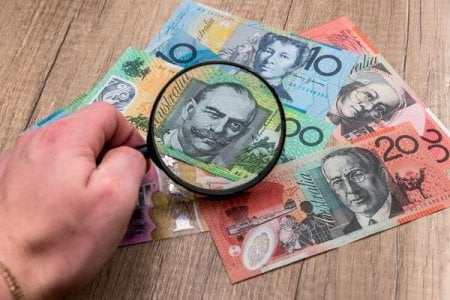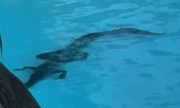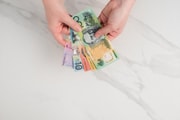Police urge Aussies to stay alert against fake banknotes, unveiling details to tell which is real
- Replies 10
In a world where technology is advancing at a rapid pace, it's not just the gadgets in our pockets that are getting smarter—our money is, too.
Australian banknotes are renowned for their advanced security features, which are designed to make counterfeiting as difficult as possible.
However, despite these efforts, fake banknotes still find their way into circulation, posing a threat to businesses and consumers alike.
Recently, Tasmania Police have sounded the alarm over counterfeit $100 notes that have been circulating across the island, particularly in the southern region.
Counterfeit cash may be relatively rare in Australia, but when it does surface, it can sting businesses hard.
Take, for example, Omar El Deek, owner of the Cosi Bar Ristorante in Melbourne. He expressed his frustration after being duped by counterfeit notes twice in a fortnight.
‘I never thought this could happen in Australia,’ he said.
‘My staff believes the customers were unaware they used fake notes and didn’t try to scam us, hence why I believe the notes were already in circulation. I wanted to raise awareness in the community.’

Tasmania Police have highlighted a telling detail that can help identify these fraudulent $100 notes.
Unlike genuine currency, which has a distinctive plastic texture, the fakes ‘don't feel real’ when touched.
‘Please be vigilant for fake notes, and if you have information on who is printing or circulating them, please contact police,’ they cautioned.
However, Aussies should know an additional detail that will help them quickly identify counterfeit money.
In the police image, the note displays the phrase, ‘This is not legal tender,’ on both sides. Additionally, one side includes a message stating that the currency is ‘for motion picture use only’.
However, some counterfeit notes circulating in wallets, business tills, and other locations are much harder to distinguish as real or fake.
Advertisements on social media suggest that these notes won't be detected by testing or rejected by poker machines, with one seller claiming they would even pass at Coles and Woolworths.
They stated that a $3,000 bundle of fake notes could be purchased for $250.
So, how can you protect yourself from falling victim to counterfeit currency?
One of the simplest methods to check if a note is counterfeit is by feeling it. If it’s made from paper or any material other than the familiar polymer, it’s definitely a fake.
‘A suspect banknote may feel excessively thick or thin compared to a genuine banknote,’ the Reserve Bank of Australia explained.
‘It is difficult to start a tear along the edge of a genuine banknote. You can also try scrunching the banknote in your hand—a genuine banknote should spring back.’
Australian currency also includes several security features that you can verify:
‘If they still have concerns, suspect counterfeit banknotes can be submitted to the Australian Federal Police for expert examination,’ a spokesperson from the RBA recommended.
‘If the notes are deemed genuine, they will be returned with written confirmation stating as such.’
According to the RBA, it is ‘well within your rights’ for businesses to refuse a banknote if they have any doubts about its authenticity.
The Australian Federal Police noted a marked increase in social media posts, pages, and advertisements claiming to sell counterfeit currency.
They cautioned that ‘items or imagery shown is not necessarily a true representation of what is being offered for sale and therefore we currently consider these pages are better characterised as scams’.
As concerns about counterfeit money continue to rise, with police highlighting key details to watch for, it's crucial to stay vigilant.
Just as warnings have been issued for fake $100 notes, being able to identify subtle differences can be equally important for other denominations.
To help you protect yourself, find out how to spot the tiny details that differentiate a genuine $50 note from a counterfeit one.
 Have you ever encountered a counterfeit note? What measures do you take to ensure the money you handle is genuine? Share your experiences and tips in the comments below.
Have you ever encountered a counterfeit note? What measures do you take to ensure the money you handle is genuine? Share your experiences and tips in the comments below.
Australian banknotes are renowned for their advanced security features, which are designed to make counterfeiting as difficult as possible.
However, despite these efforts, fake banknotes still find their way into circulation, posing a threat to businesses and consumers alike.
Recently, Tasmania Police have sounded the alarm over counterfeit $100 notes that have been circulating across the island, particularly in the southern region.
Counterfeit cash may be relatively rare in Australia, but when it does surface, it can sting businesses hard.
Take, for example, Omar El Deek, owner of the Cosi Bar Ristorante in Melbourne. He expressed his frustration after being duped by counterfeit notes twice in a fortnight.
‘I never thought this could happen in Australia,’ he said.
‘My staff believes the customers were unaware they used fake notes and didn’t try to scam us, hence why I believe the notes were already in circulation. I wanted to raise awareness in the community.’

Tasmania Police warned of counterfeit $100 notes circulating, especially in the island's southern region. Credit: Shutterstock
Tasmania Police have highlighted a telling detail that can help identify these fraudulent $100 notes.
Unlike genuine currency, which has a distinctive plastic texture, the fakes ‘don't feel real’ when touched.
‘Please be vigilant for fake notes, and if you have information on who is printing or circulating them, please contact police,’ they cautioned.
However, Aussies should know an additional detail that will help them quickly identify counterfeit money.
In the police image, the note displays the phrase, ‘This is not legal tender,’ on both sides. Additionally, one side includes a message stating that the currency is ‘for motion picture use only’.
However, some counterfeit notes circulating in wallets, business tills, and other locations are much harder to distinguish as real or fake.
Advertisements on social media suggest that these notes won't be detected by testing or rejected by poker machines, with one seller claiming they would even pass at Coles and Woolworths.
They stated that a $3,000 bundle of fake notes could be purchased for $250.
So, how can you protect yourself from falling victim to counterfeit currency?
One of the simplest methods to check if a note is counterfeit is by feeling it. If it’s made from paper or any material other than the familiar polymer, it’s definitely a fake.
‘A suspect banknote may feel excessively thick or thin compared to a genuine banknote,’ the Reserve Bank of Australia explained.
‘It is difficult to start a tear along the edge of a genuine banknote. You can also try scrunching the banknote in your hand—a genuine banknote should spring back.’
Australian currency also includes several security features that you can verify:
- Clear Window: Depending on the note's value, this section displays different designs. For older notes, ensure the white ink can't be easily rubbed off. Newer notes have a clear window running from top to bottom with moving holograms.
- Look for the Star: Diamond-shaped patterns within a circle should align to form a seven-pointed star when the note is held up to the light.
- Coat of Arms: A hidden Coat of Arms becomes visible when the note is held up to the light.
- Dark Print: On older notes, the denomination is printed with special raised ink that you can feel with your fingers.
‘If they still have concerns, suspect counterfeit banknotes can be submitted to the Australian Federal Police for expert examination,’ a spokesperson from the RBA recommended.
‘If the notes are deemed genuine, they will be returned with written confirmation stating as such.’
According to the RBA, it is ‘well within your rights’ for businesses to refuse a banknote if they have any doubts about its authenticity.
The Australian Federal Police noted a marked increase in social media posts, pages, and advertisements claiming to sell counterfeit currency.
They cautioned that ‘items or imagery shown is not necessarily a true representation of what is being offered for sale and therefore we currently consider these pages are better characterised as scams’.
As concerns about counterfeit money continue to rise, with police highlighting key details to watch for, it's crucial to stay vigilant.
Just as warnings have been issued for fake $100 notes, being able to identify subtle differences can be equally important for other denominations.
To help you protect yourself, find out how to spot the tiny details that differentiate a genuine $50 note from a counterfeit one.
Key Takeaways
- Tasmania Police warned about counterfeit $100 notes circulating, particularly in the southern region of the island.
- The fake notes feature phrases such as ‘This is not legal tender’ and ‘for motion picture use only’, which are telltale signs of forgery.
- Techniques for spotting fake currency include checking the feel of the note, the clear window, the alignment of the star, and the Coat of Arms visible when held up to the light.
- The Reserve Bank of Australia recommended returning suspect counterfeit banknotes to the Australian Federal Police for examination and reminded businesses they have the right to refuse banknotes they are concerned about.







